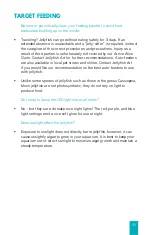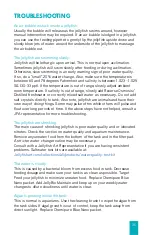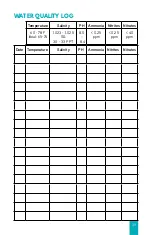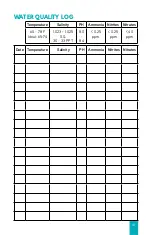
28
JELLYFISH AQUARIUM MAINTENANCE
What else should I know about water changes?
• The cleaner you keep your aquarium, the better your water quality
will be. This will promote growth and healthy jellyfish. Taking proper
care of your aquarium will create less work for you in the long run by
avoiding runaway water quality parameters that will require additional
maintenance.
• Since you are removing some of the nitrifying bacteria needed while
doing a water change, it is highly recommended to replenish this
population by adding a capful of JellyBio Maintain each time you do a
water change!
• Ensure there are no air bubbles stuck to the sides of the aquarium
from doing a water change before placing your jellyfish back into the
aquarium. Having bubbles on the side of your aquarium can result in
a jellyfish producing a hole if the bubble gets stuck under the jellyfish.
Refer to the troubleshooting section if this occurs.
• Occasionally remove the black filter sponge and wring it out in the
saltwater you removed from doing a water change. This is to dislodge
any food particulate that could be causing problems for your aquarium’s
water chemistry. This provides some mechanical filtration in the
process.
Do not clean the sponge pad in the sink with tap water
, as this
is where majority of your nitrifying bacteria live. Doing so will result in
a loss of biological filtration.
• You may need to remove the jellyfish when doing a large cleaning. In a
clean, “aquarium-use” only cup, gently remove the jellyfish with some
tank water. Isolating your jellyfish prior to doing any maintenance on
the tank drastically reduces the chances of injury to the jellyfish while
cleaning. Jellyfish must be removed from the aquarium prior to using
any large-diameter siphon hose.
• Be sure to clean out the bulb of your pipette periodically.
Changing your aquarium’s water chemistry rapidly will impact the health of
the Jellyfish! It is never advisable to change over 50% volume at one time.











































